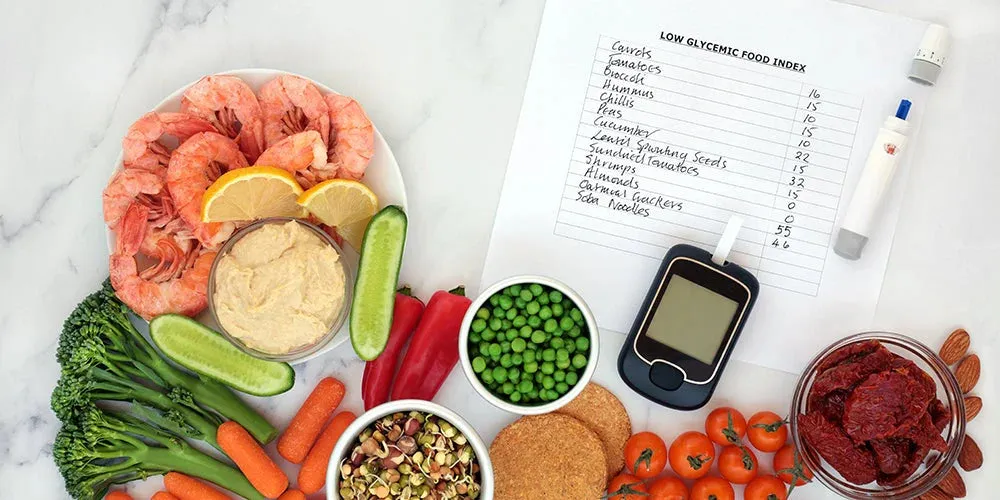Read time : 3 minutes

Making healthy eating decisions doesn’t have to be confusing — and understanding the glycemic index (GI) can help you make smarter food choices that boost energy, support weight control, and lower your risk of chronic diseases. Let’s explore what GI means, why it matters, and how to use it in everyday life.
What is the Glycemic Index (GI)?
The glycemic index (GI) ranks carbohydrate-rich foods on a scale from 0 to 100 based on how quickly they raise your blood sugar levels after eating. Pure glucose — the reference point — has a GI of 100.
- Low-GI foods (≤55): Examples include oats, lentils, beans, apples, and non-starchy vegetables.
- Medium-GI foods (56–69): Examples include basmati rice, sweet potatoes, and pineapple.
- High-GI foods (≥70): Examples include white bread, instant mashed potatoes, and sugary snacks.
The science behind GI is well-documented: research published in journals like the American Journal of Clinical Nutrition consistently shows that low-GI diets help improve blood sugar control, reduce cholesterol levels, and may lower the risk of type 2 diabetes and heart disease.
Why Does the GI Matter for Your Health?
Understanding the GI helps you:
- Maintain steady energy levels: Low-GI foods release glucose slowly, avoiding sudden energy crashes.
- Control hunger and cravings: Stable blood sugar keeps you fuller for longer.
- Reduce long-term health risks: Diets lower in GI have been linked to better heart health and improved insulin sensitivity.
In contrast, high-GI foods can cause rapid spikes and drops in blood sugar, which over time can contribute to weight gain, insulin resistance, and increased risk of chronic diseases.
Smart Ways to Use the GI in Your Diet

The GI isn’t about avoiding carbs altogether. It’s about making balanced, informed choices:
- Pair foods wisely: Combine high-GI foods with sources of protein, fiber, or healthy fats to slow digestion. For example, add avocado to toast or nuts to fruit.
- Choose whole, minimally processed carbs: Brown rice, barley, legumes, and whole-grain bread generally have lower GI than their refined counterparts.
- Watch portion sizes: Even low-GI foods can spike blood sugar if you eat too much.
- Consider cooking methods: Cooking pasta “al dente” keeps the GI lower than overcooking it.
Beyond the Numbers: Quality and Context Matter
It’s important to remember:
- Foods like meat, fish, eggs, and oils have no GI, but they still affect the overall nutritional quality of your meal.
- The same food can have a different GI depending on ripeness, variety, and preparation. For example, ripe bananas have a higher GI than greener ones.
Rather than chasing numbers, use the GI as one piece of your healthy eating toolkit, alongside a focus on whole foods, diversity, and balance.
Final Thoughts: Making Smart Food Choices Every Day
Learning about the glycemic index empowers you to:
- Build meals that stabilize blood sugar and energy
- Make smarter food choices aligned with your health goals
- Reduce your risk of diabetes and heart disease over time
- It’s not about strict rules but about evidence-based, flexible choices tailored to your lifestyle.
By understanding the GI, you turn everyday meals into a tool for better health — without giving up the foods you love.
Meet Your Ai Personal Trainer
👉Personalized workouts. Progress tracking. Real results.
MyHealthCop AI is your pocket trainer — always ready, always smart.
Download the App to Take your free Ai health assessment Today [Take Assessment]
RD, LD Julius Sammah
MyHealthCop Certified Dietician